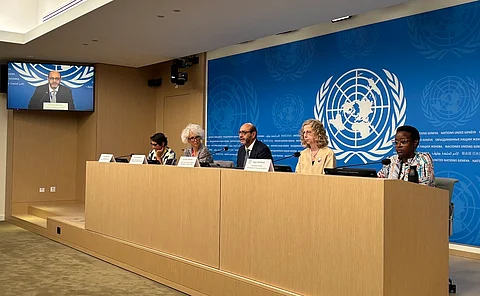

The Conference of the Parties (COP) is central to the global plastics treaty, tasked with implementation review and international coordination.
While its necessity is agreed upon, debates continue over its authority and decision-making processes.
Countries propose enhancing COP's capacity with scientific bodies, while others suggest fallback voting mechanisms to prevent stagnation. The COP's structure remains a key negotiation point.
Article 20 establishes the Conference of the Parties (COP) as the central governing body of the global plastics treaty. As the institutional anchor of the agreement, the COP is tasked with reviewing implementation, adopting rules and protocols, guiding subsidiary bodies, and facilitating international coordination. While there is broad agreement on the COP’s necessity, the negotiations reflect differing views on how expansive its authority should be and how decisions should be made.
Many countries have proposed enhancing the COP’s capacity through the creation of dedicated subsidiary bodies. Several submissions— including from PSIDS, GRULAC and Uruguay—have called for scientific and technical bodies to be operational from the first COP. These bodies are envisioned to bring thematic, evidence-based support to the treaty’s implementation, with recommendations including specialized panels, inclusive membership, and formal reporting lines to the COP. Such mechanisms are seen as vital for ensuring the treaty evolves in step with emerging science and policy needs.
Decision-making modalities remain a contentious issue. A number of states, including the Philippines, Rwanda and Norway, have supported the introduction of fallback voting mechanisms—such as a two-thirds majority—when consensus cannot be reached. This reflects a broader concern that overly rigid consensus requirements could stall the treaty’s progress or prevent timely responses to urgent plastic pollution challenges. Others have gone further by suggesting that procedural decisions, such as the adoption of rules, should not be contingent on unanimous agreement.
In contrast, some countries have shown hesitation toward expanding the COP’s mandate. The United States and Saudi Arabia, for instance, have proposed limiting the COP’s authority to adopt new annexes or act on implementation data. Iran has opposed a compliance-driven vision of the COP, advocating instead for a facilitative model grounded in national discretion.
The structure and powers of the COP remain a key site of negotiation, with implications for the treaty’s adaptability, responsiveness, and long-term legitimacy. How states reconcile flexibility with accountability will define the strength and relevance of this core institution over time.
This is a click to zoom map. View the larger image by clicking on it